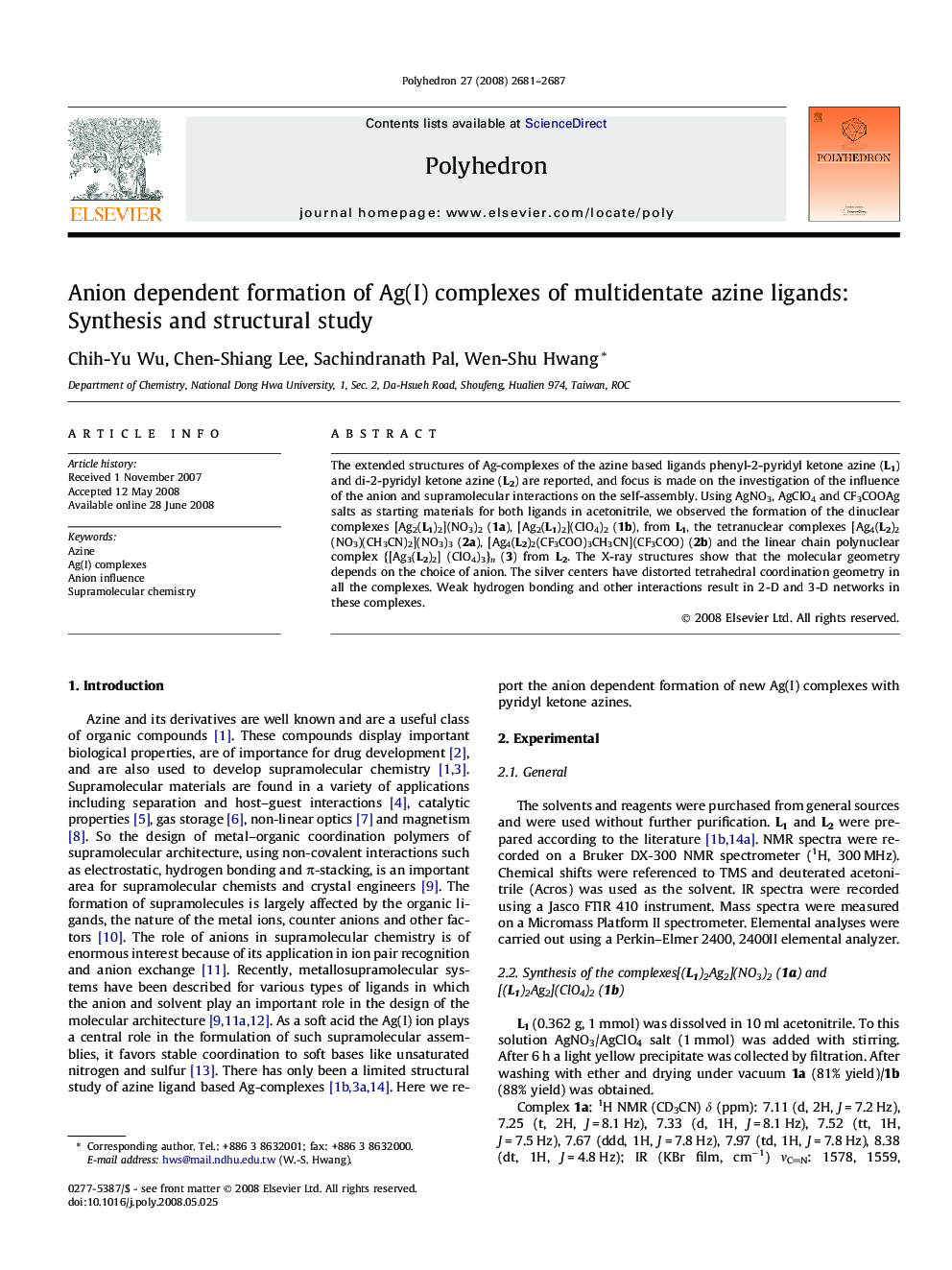| Article ID | Journal | Published Year | Pages | File Type |
|---|---|---|---|---|
| 1339271 | Polyhedron | 2008 | 7 Pages |
The extended structures of Ag-complexes of the azine based ligands phenyl-2-pyridyl ketone azine (L1) and di-2-pyridyl ketone azine (L2) are reported, and focus is made on the investigation of the influence of the anion and supramolecular interactions on the self-assembly. Using AgNO3, AgClO4 and CF3COOAg salts as starting materials for both ligands in acetonitrile, we observed the formation of the dinuclear complexes [Ag2(L1)2](NO3)2 (1a), [Ag2(L1)2](ClO4)2 (1b), from L1, the tetranuclear complexes [Ag4(L2)2 (NO3)(CH3CN)2](NO3)3 (2a), [Ag4(L2)2(CF3COO)3CH3CN](CF3COO) (2b) and the linear chain polynuclear complex {[Ag3(L2)2] (ClO4)3}n (3) from L2. The X-ray structures show that the molecular geometry depends on the choice of anion. The silver centers have distorted tetrahedral coordination geometry in all the complexes. Weak hydrogen bonding and other interactions result in 2-D and 3-D networks in these complexes.
Graphical abstractAg(I) complexes derived from pyridyl azine ligands have been synthesized and structurally characterized. The complexes possessed dinuclear, tetranuclear or linear chain structures. Hydrogen bonding and C–H⋯π interactions generate supramolecular frameworks.Figure optionsDownload full-size imageDownload as PowerPoint slide
